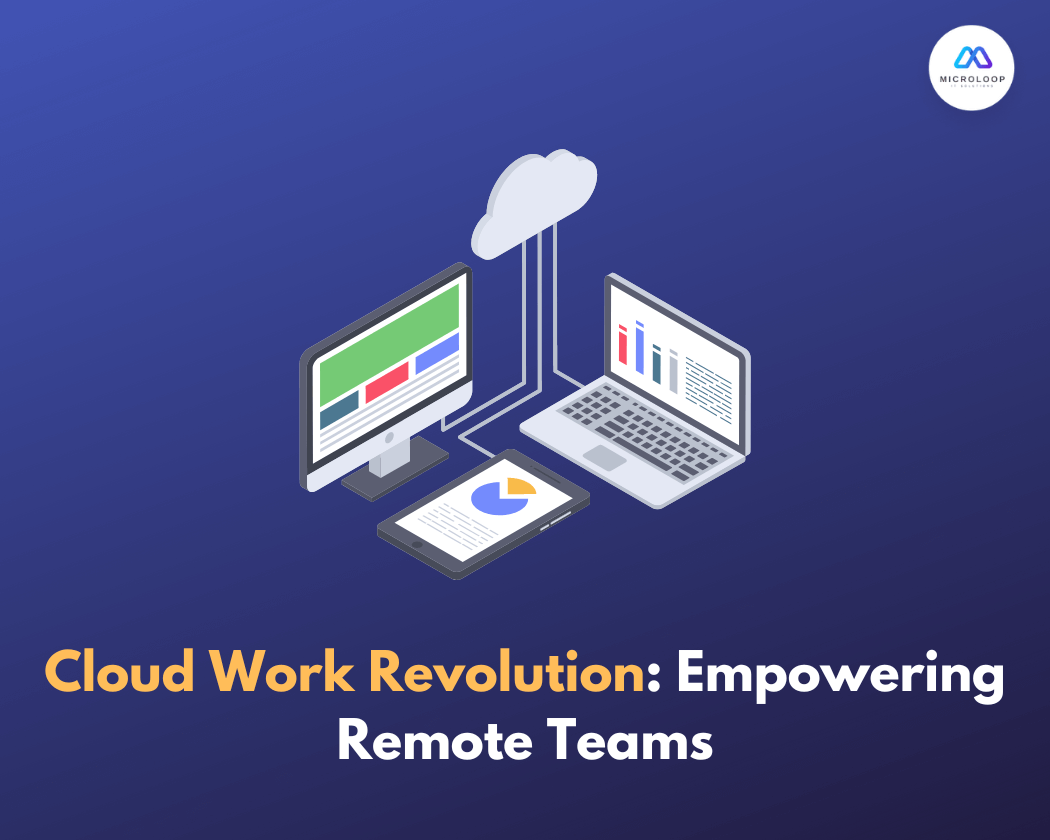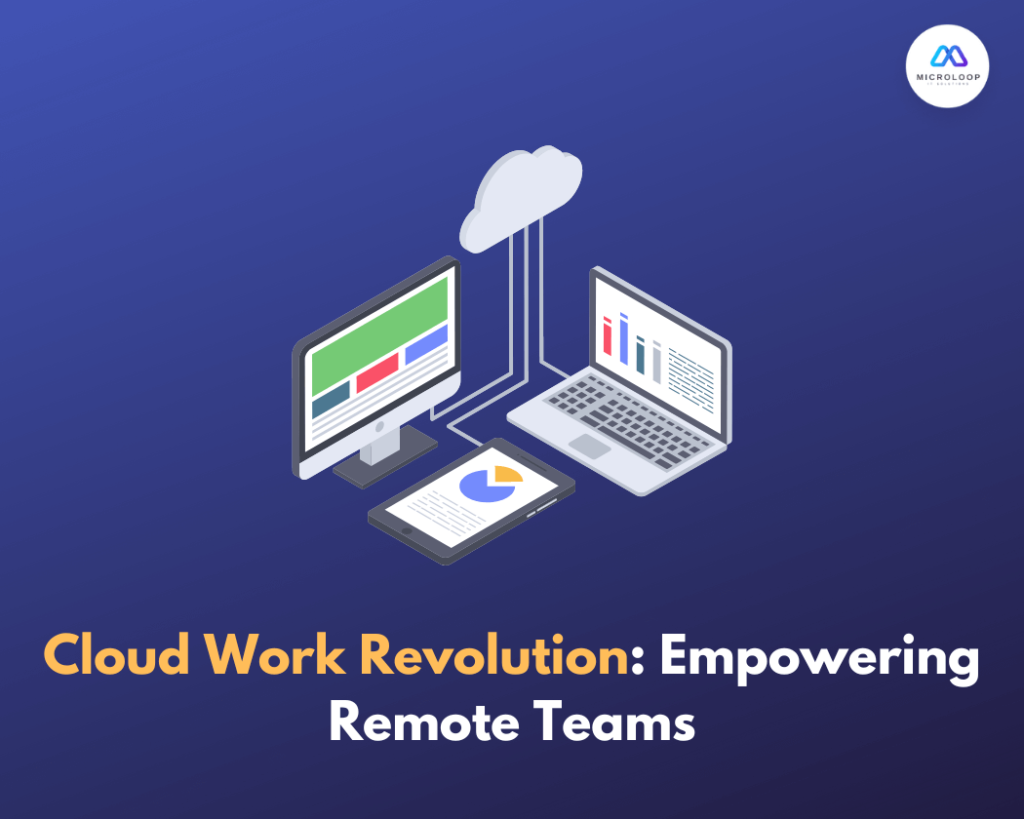
Close



The world has witnessed a significant transformation in how we work in recent years. The rise of cloud computing has played a pivotal role in fueling the future of remote work. With the advent of advanced cloud-native solutions, businesses have embraced a distributed workforce model, enabling employees to work from anywhere with seamless access to critical data and applications. This blog post explores the fundamental role of cloud computing in the remote work revolution, shedding light on its benefits, challenges, and the evolving landscape of modern workplaces.
Before we delve into the impact of cloud computing on remote work, let's grasp the essence of this transformative technology. Cloud computing refers to the delivery of on-demand computing services over the Internet. It encompasses many resources, including storage, servers, databases, networking, software, analytics, etc. Cloud solutions are classified into public, private, hybrid, and multi-cloud models, each catering to specific business needs.
Cloud computing has revolutionized businesses' operations, providing cost-effective, scalable, and flexible IT solutions. Organizations can now leverage cloud-based services to streamline operations, optimize resources, and enhance collaboration among remote teams.
Recently, remote work has evolved from a luxury to a necessity, largely accelerated by global events such as the COVID-19 pandemic. Employers and employees alike have realized the benefits of remote work, including improved work-life balance, enhanced productivity, and access to a broader talent pool. As a result, companies are embracing remote work as a long-term strategy, and cloud computing has emerged as the backbone of this transformation.
One of the key factors driving the remote work revolution is the adoption of cloud-native solutions. These applications and services are designed to run on cloud infrastructure, making them inherently compatible with remote work setups. Cloud-native tools facilitate team collaboration, real-time data sharing, and seamless communication, enabling employees to stay connected regardless of physical location.
Team collaboration lies at the heart of successful remote work environments. Cloud computing platforms offer collaboration tools like virtual meeting software, document-sharing platforms, and project management applications. These tools empower teams to collaborate effectively, brainstorm ideas, and execute projects efficiently, irrespective of geographical barriers.
While the benefits of remote work are undeniable, ensuring data security and privacy is paramount. Cloud computing plays a pivotal role by providing robust security measures like encryption, multi-factor authentication, and data backups. Cloud service providers invest heavily in security protocols to safeguard sensitive information, earning the trust of businesses and employees alike.
As businesses adapt to changing market dynamics, the demand for scalability and flexibility has never been greater. Cloud computing offers elastic resources that can scale up or down based on demand, enabling businesses to optimize costs and stay agile. This flexibility is particularly advantageous for companies with fluctuating workloads or seasonal demands.
Transitioning to remote work often presents infrastructure challenges for businesses. On-premises systems may not be equipped to handle the surge in remote access and the need for robust connectivity. Cloud computing offers a viable solution by providing the infrastructure required to support remote work on a large scale. Cloud service providers manage and maintain the underlying infrastructure, freeing businesses from the burden of hardware maintenance.
Cloud computing's pay-as-you-go model allows businesses to pay only for the resources they consume. This results in significant cost savings compared to traditional on-premises infrastructure, where businesses may need expensive hardware and software licenses. Cloud services offer predictable and transparent pricing, making it easier for companies to manage their IT budgets effectively.
The remote work revolution, fueled by cloud computing, has reshaped the traditional notion of workplaces. Employers now have the flexibility to hire top talent globally, while employees can enjoy greater work-life balance and autonomy. As remote work becomes more mainstream, businesses are redefining their workplace policies to accommodate this shift in work dynamics.
In software development services, cloud computing emerges as a pivotal catalyst for the future of remote work. Its adoption has ushered in a new era of flexibility and efficiency, fully allowing businesses to embrace remote work as a viable and effective strategy. With cloud-native solutions, teams can enjoy enhanced collaboration, fortified security measures, and scale operations effortlessly. Moreover, the cost-effectiveness of cloud computing further elevates its appeal.
As the world adapts to this paradigm shift, cloud-native solutions will undoubtedly occupy a central role in shaping the workplaces of tomorrow. Embracing the power of cloud computing opens up boundless opportunities for businesses to thrive in a rapidly evolving global landscape. By leveraging the potential of remote work and cloud-based technologies, organizations can establish dynamic, interconnected, and innovative ecosystems, revolutionizing how work is accomplished and creating a brighter future for enterprises worldwide. The impact of cloud computing on the software development landscape is profound, forever transforming how we work and setting the stage for a more agile and interconnected future.